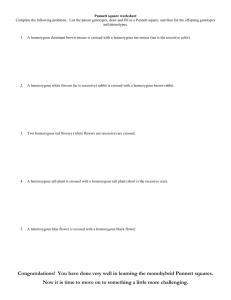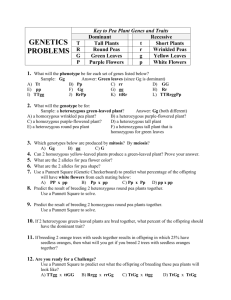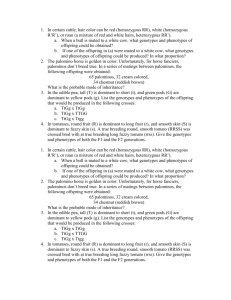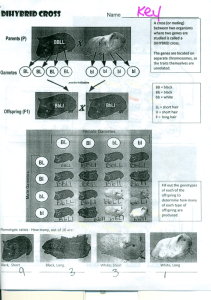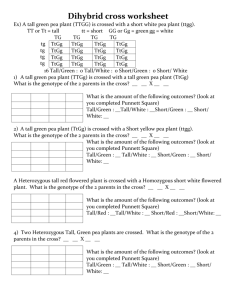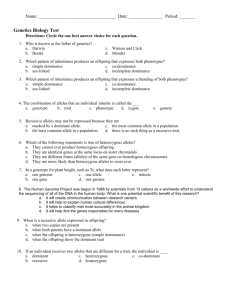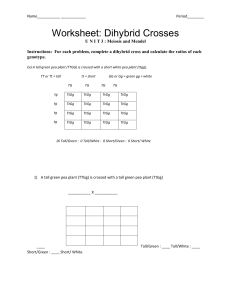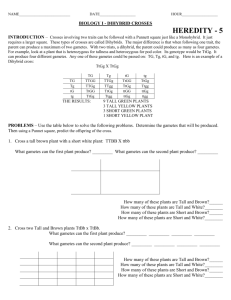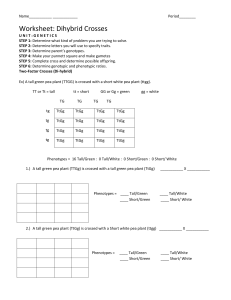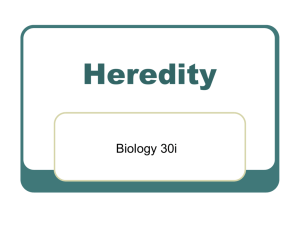File
advertisement
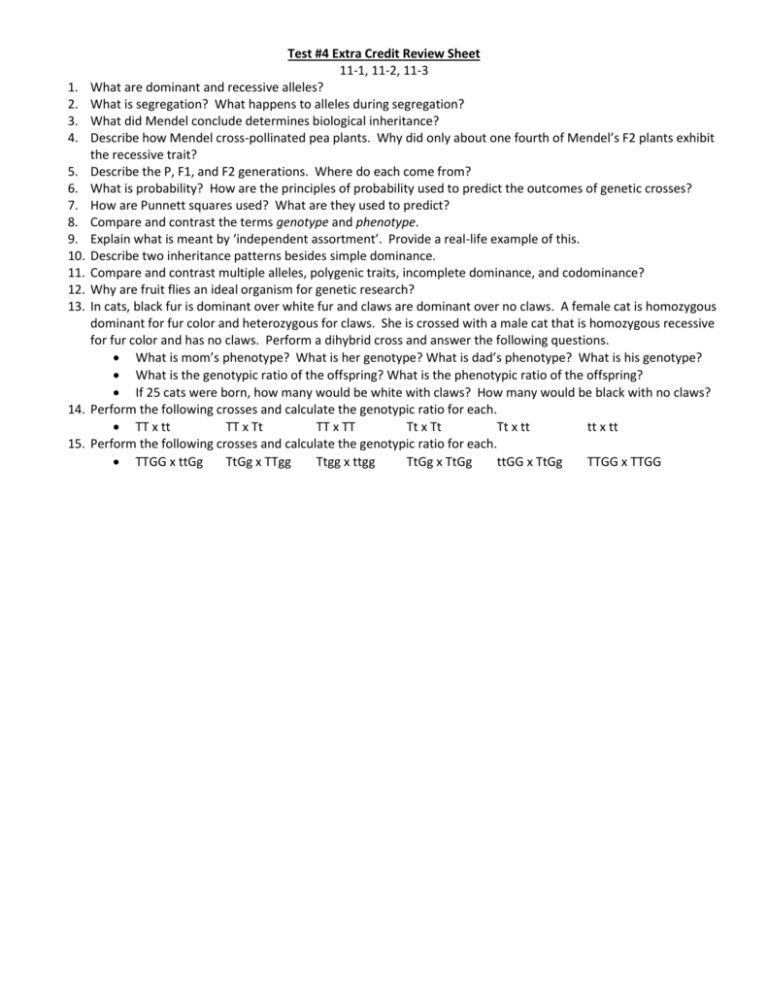
1. 2. 3. 4. 5. 6. 7. 8. 9. 10. 11. 12. 13. 14. 15. Test #4 Extra Credit Review Sheet 11-1, 11-2, 11-3 What are dominant and recessive alleles? What is segregation? What happens to alleles during segregation? What did Mendel conclude determines biological inheritance? Describe how Mendel cross-pollinated pea plants. Why did only about one fourth of Mendel’s F2 plants exhibit the recessive trait? Describe the P, F1, and F2 generations. Where do each come from? What is probability? How are the principles of probability used to predict the outcomes of genetic crosses? How are Punnett squares used? What are they used to predict? Compare and contrast the terms genotype and phenotype. Explain what is meant by ‘independent assortment’. Provide a real-life example of this. Describe two inheritance patterns besides simple dominance. Compare and contrast multiple alleles, polygenic traits, incomplete dominance, and codominance? Why are fruit flies an ideal organism for genetic research? In cats, black fur is dominant over white fur and claws are dominant over no claws. A female cat is homozygous dominant for fur color and heterozygous for claws. She is crossed with a male cat that is homozygous recessive for fur color and has no claws. Perform a dihybrid cross and answer the following questions. What is mom’s phenotype? What is her genotype? What is dad’s phenotype? What is his genotype? What is the genotypic ratio of the offspring? What is the phenotypic ratio of the offspring? If 25 cats were born, how many would be white with claws? How many would be black with no claws? Perform the following crosses and calculate the genotypic ratio for each. TT x tt TT x Tt TT x TT Tt x Tt Tt x tt tt x tt Perform the following crosses and calculate the genotypic ratio for each. TTGG x ttGg TtGg x TTgg Ttgg x ttgg TtGg x TtGg ttGG x TtGg TTGG x TTGG
